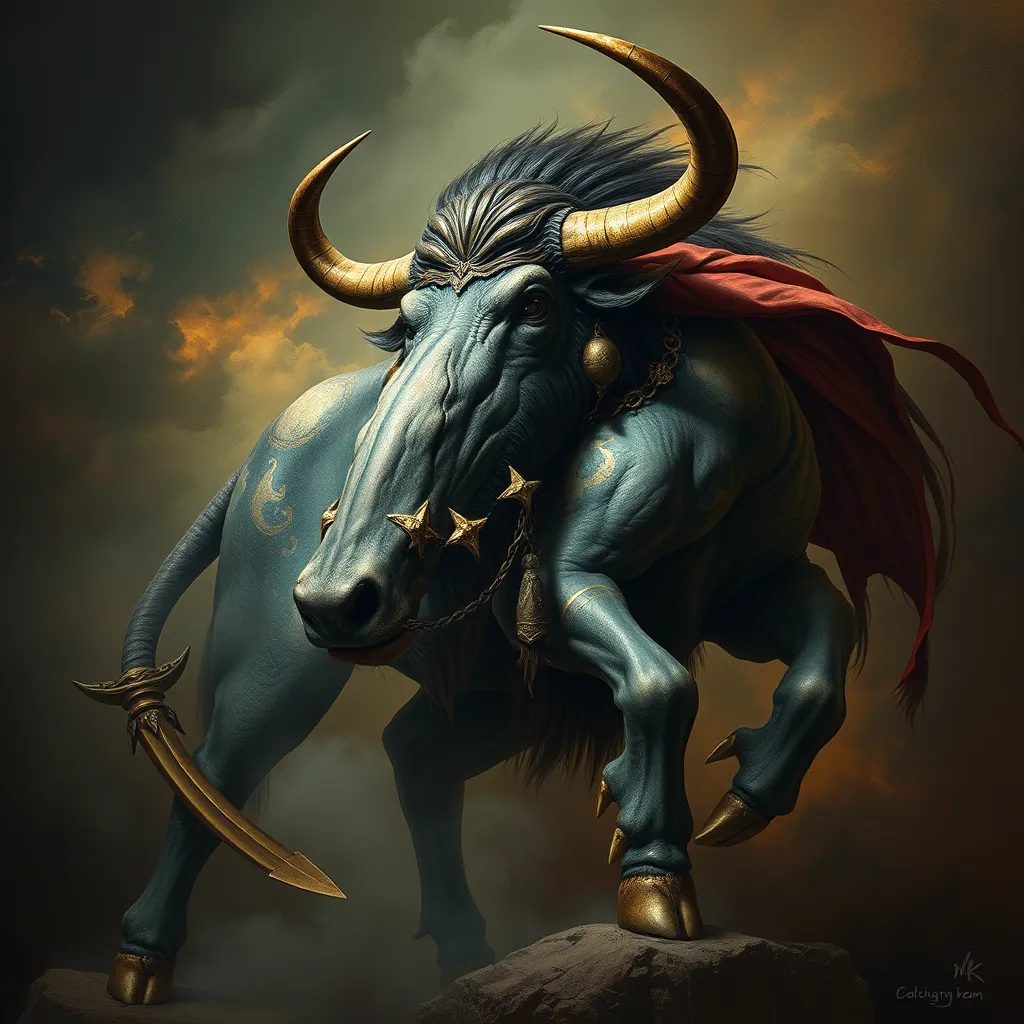The Fox Spirit’s Warning: Exploring the Kitsune’s Role as a Sign of Omens and Prophecy
I. Introduction
The Kitsune, a mystical fox spirit from Japanese folklore, has captivated imaginations for centuries. This enchanting creature is not merely a part of folklore; it represents a rich tapestry of cultural beliefs and practices that have shaped Japanese society. At the heart of many narratives involving the Kitsune are themes of omens and prophecies, suggesting that the appearance of this spirit can herald significant events or changes.
In various cultures, omens and prophecies play crucial roles, often serving as warnings or indicators of future happenings. The purpose of this article is to delve into the Kitsune’s multifaceted role as a harbinger of signs and omens, exploring its historical significance, mythological roots, and contemporary interpretations.
II. Understanding Kitsune: Origins and Characteristics
A. Definition and etymology of Kitsune
The term “Kitsune” (狐) translates to “fox” in Japanese. Its etymology is rich, possibly deriving from ancient roots that signify cunning and agility, traits commonly associated with foxes in folklore worldwide. In Japanese culture, the Kitsune is often depicted as a magical creature capable of transformation and possessing intelligence beyond that of ordinary animals.
B. Historical significance in Japanese culture
Historically, Kitsune have been revered as messengers of Inari, the deity of rice, agriculture, and prosperity. Their association with agriculture and fertility has led to their veneration in various festivals and rituals across Japan. As guardians of the rice fields, the Kitsune are often seen as symbols of good fortune and abundance.
C. Physical and supernatural traits associated with Kitsune
- Shapeshifting abilities: Kitsune are renowned for their ability to transform into human forms, often depicted as beautiful women.
- Magical powers: They are believed to possess various supernatural abilities, such as creating illusions and manipulating the elements.
- Longevity: Kitsune are said to live for hundreds of years, gaining wisdom and power as they age, further enhancing their mystical status.
III. The Kitsune in Japanese Mythology
A. Legends and stories featuring the Kitsune
Kitsune appear in numerous Japanese legends, often embodying the duality of benevolence and malevolence. One famous tale is that of Tamamo-no-Mae, a beautiful courtesan who was later revealed to be a Kitsune in disguise, representing the deceptive nature of these spirits.
B. The dual nature: benevolent vs. malevolent Kitsune
Kitsune are categorized into two main types: the benevolent and the malevolent. Benevolent Kitsune, known as Yasakani no Kitsune, are protectors and bringers of good fortune, while malevolent ones, like Kyūbi no Kitsune, are often portrayed as tricksters or harbingers of misfortune, reflecting the complexity of their character in folklore.
C. Symbolism of transformation and deception
The ability to transform is a key element of the Kitsune’s symbolism, representing the fluid nature of identity and reality. Deception, whether through trickery or disguise, serves as a reminder of the complexities of human relationships and the potential for misunderstanding.
IV. Kitsune as Omens: Signs and Interpretations
A. Common signs associated with Kitsune appearances
Throughout history, the appearance of a Kitsune has been interpreted as a sign of various omens:
- A white Kitsune is often seen as a harbinger of good fortune.
- The sighting of a Kitsune in a dream may signal an important change or revelation.
- Unexplained phenomena, like sudden temperature changes or flickering lights, may be attributed to the presence of a Kitsune.
B. Cultural interpretations of these signs
In Japanese culture, the interpretation of these signs can vary widely. Some view them as direct messages from the divine, while others consider them as reminders to pay attention to one’s surroundings and inner thoughts. The cultural significance of these signs often intertwines with personal belief systems and experiences.
C. Case studies of historical events linked to Kitsune omens
Several historical events in Japan have been linked to Kitsune omens. For instance, during periods of famine or natural disasters, sightings of Kitsune were interpreted as warnings from the gods. These events reinforced the belief in Kitsune as protectors or warners of impending doom, impacting societal behavior and responses to crises.
V. The Kitsune and Prophecy: A Deeper Connection
A. The role of the Kitsune in prophetic narratives
Kitsune are often woven into narratives of prophecy, where their appearances are seen as precursors to significant events. These prophetic tales highlight the Kitsune’s role as intermediaries between the human realm and the spiritual world.
B. Analysis of specific myths where Kitsune predict the future
One notable story involves a Kitsune that foretold the rise and fall of a powerful dynasty. In this myth, the Kitsune appeared to a ruler in a dream, providing cryptic messages that ultimately guided their decisions, showcasing how the Kitsune’s insights were valued in shaping the future.
C. Influence of Kitsune prophecies on societal behaviors and beliefs
The influence of Kitsune prophecies extends beyond individual narratives; it has shaped collective beliefs and rituals within Japanese society. Communities often organized festivals to honor the Kitsune, seeking their favor and guidance in hope of avoiding misfortune and attracting prosperity.
VI. Kitsune in Contemporary Culture
A. Representation of Kitsune in modern media and literature
In contemporary culture, the Kitsune continues to thrive as a popular motif in anime, manga, and literature. Characters inspired by the Kitsune often embody themes of magic, duality, and transformation, reflecting the creature’s enduring allure.
B. The Kitsune’s enduring legacy in popular culture
The legacy of the Kitsune has permeated various facets of modern life, from video games to fashion. This creature is celebrated not only for its mystical qualities but also for its role as a symbol of resilience and adaptability.
C. Changing perceptions of the Kitsune in today’s society
While the traditional interpretations of the Kitsune as a harbinger of omens persist, modern perspectives often emphasize empowerment and self-discovery. The Kitsune is increasingly viewed as a symbol of independence and strength, resonating with contemporary values.
VII. The Impact of Kitsune Omens on Japanese Traditions
A. Festivals and rituals honoring the Kitsune
Many festivals in Japan celebrate the Kitsune, such as the Inari Matsuri, where worshippers express gratitude and seek blessings from the spirit. These events often include offerings of rice, sake, and other foods to appease the fox spirits.
B. The role of Kitsune in agricultural and seasonal practices
In agricultural traditions, the Kitsune is honored during planting and harvest seasons. Farmers often perform rituals to invoke the Kitsune’s protection, ensuring a bountiful harvest and safeguarding against pests and disease.
C. Influence on art, literature, and spiritual practices
The Kitsune’s influence extends into various artistic expressions, from traditional paintings to modern installations. In literature, the Kitsune appears in countless stories, while spiritual practices involving the Kitsune continue to be observed, emphasizing its importance in Japanese culture.
VIII. Conclusion
In conclusion, the Kitsune serves as a complex symbol within Japanese folklore, embodying themes of transformation, prophecy, and cultural significance. As we have explored, the Kitsune’s role as a harbinger of omens has shaped historical narratives and continues to influence modern interpretations.
Reflecting on the significance of the Kitsune as a cultural symbol, we see its impact not only in Japan but also in global contexts. The ongoing fascination with the Kitsune highlights the universal themes of change and the quest for understanding the unknown. As we move forward, the study of omens and prophecies in folklore, particularly through the lens of the Kitsune, promises to deepen our understanding of cultural narratives and their relevance in contemporary society.




